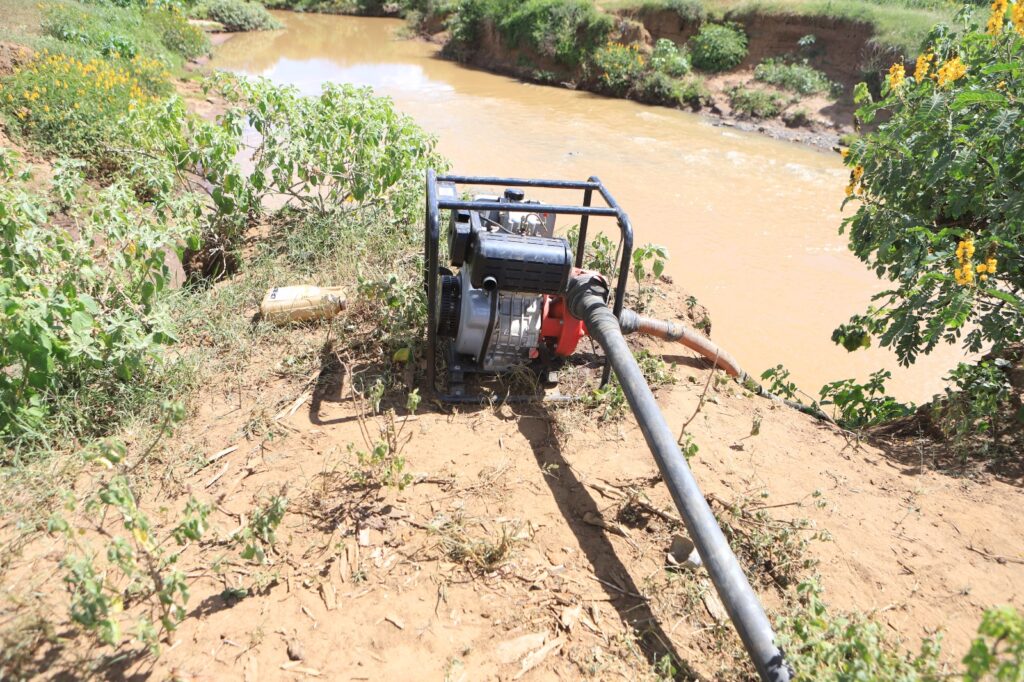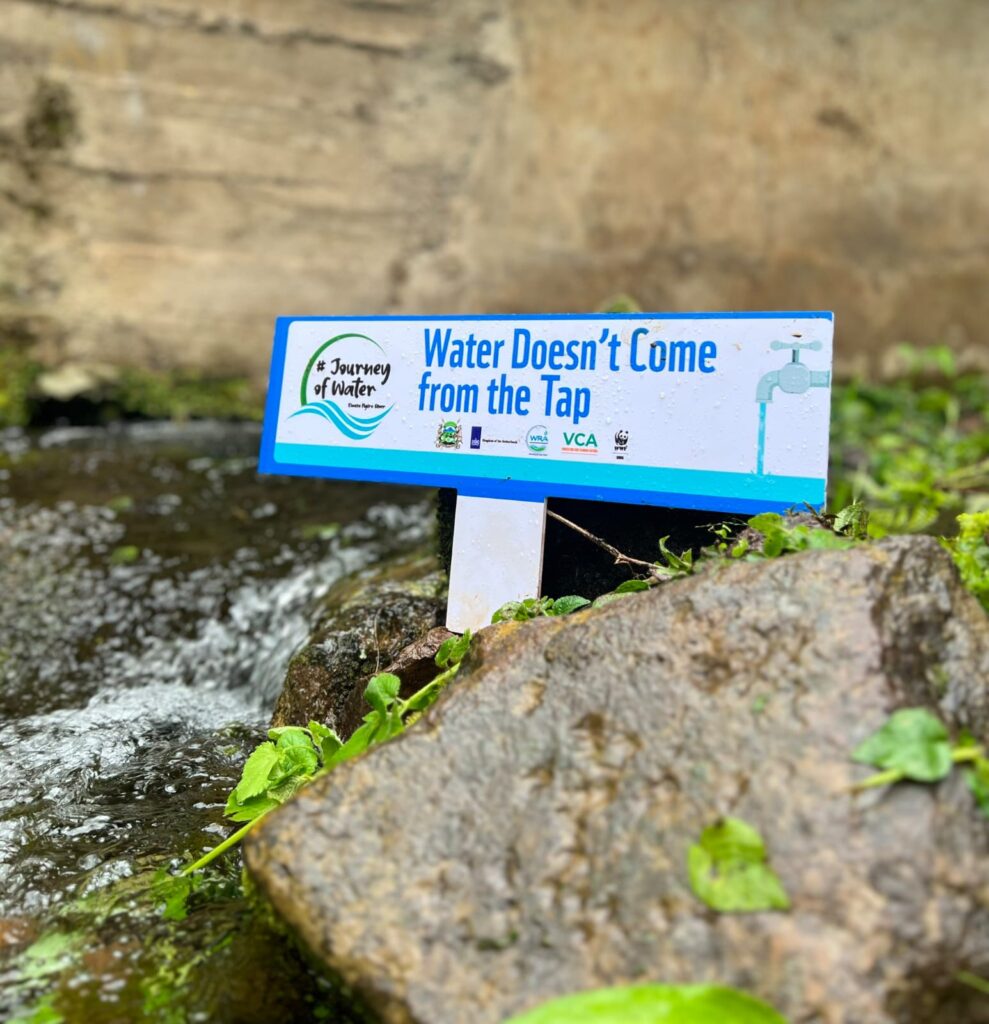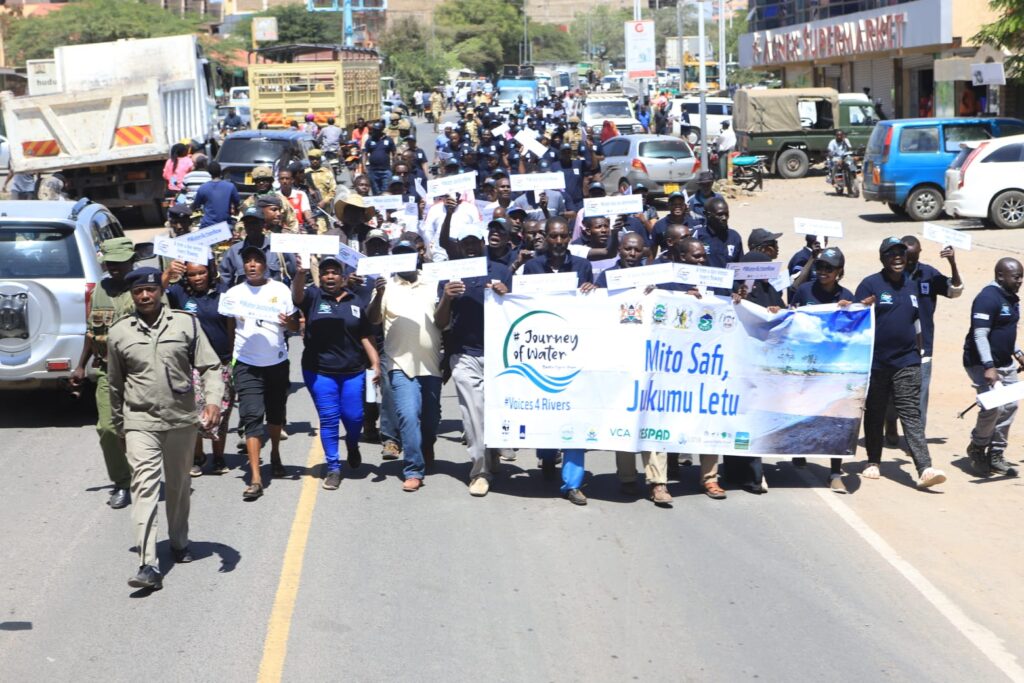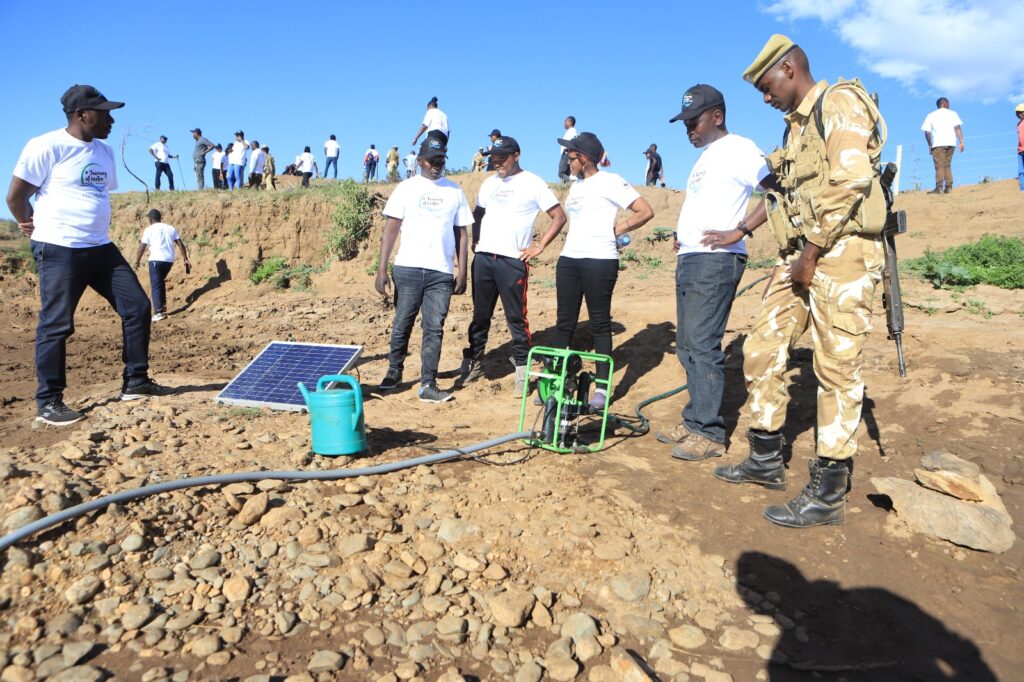Illegal water abstraction, pollution, and unsustainable farming practices are some of the issues attributed to community conflicts arising from the drying of tributaries that feed the 700km Ewaso Nyiro River which feeds drains into the Lorian Swamp.
This was my discovery when I joined a group of over 500 men and women on a grueling three-day walk aimed at sensitizing communities on the conservation of the water catchment.
Many of the community members participated in the walk that was organized by WWF-Kenya with support from the Netherlands Embassy in Kenya through a project dubbed ‘Catchment to Tap’.

Along the tributaries which include Timau, Nanyuki, and Isiolo rivers, I noted that there were uninhibited human activities posing the greatest danger to the ecosystem.
In some instances, some of the farmers we met during the over 20 Km walk along the different tributaries ducked into the thickets while others hurriedly disconnected their illegal water connections, perhaps to hide their unscrupulous ways.
Alarmed by the number of illegal pumps, I spoke to an official of the Water Resource Authority who requested anonymity due to the sensitivity of the matter, to gain more understanding of the obtaining situation.
The source confirmed that WRA is fully aware of the illegal abstractions but quickly pointed out that the land owners who are the culprits, are “well-connected.”
“If you try and enforce the law on this class of people, they ask you if you know who they are. It gets extremely difficult to control them. We are now asking for a collective approach where we have civil societies, River User Associations (RUAs), County Government, and the National Government coming together to enforce the regulations,” the source told me
According to the WRA official, if all stakeholders are involved, implementation of the rationing programs will be addressed with the seriousness it deserves.
A participant, Margaret Kuchal, confirmed what the source was saying as true adding that a number of prominent political players downstream have made the conflict a never-ending story, perhaps for their own interests, as they allegedly incite communities to fight over the scarce resource.
“People living downstream blame those upstream for taking water from the source to their pipes without any consideration. Instead of using only what they need, they flood their farms with water. What’s more, this water washes away their fertilizer which pollutes the rivers,” she said.

On the other hand, Kuchal says politicians upstream exploit the water in total disregard of the law and the people living downstream which only serves to aggravate an already worse situation.
As a solution, Kuchal reiterates rationing of the scarce resource ought to be done without fear or favour as well as make sure all those benefiting from the resource conserve it by using best practices like not farming on riparian land, using drip irrigation, only pumping what is needed subject to certification as well as the building of terraces to control soil erosion.
Experts in the group averred that if water upstream is not managed, those downstream will lack the crucial commodity, deteriorating the ensuing conflict.
The three-day walk culminated in a meeting between county government officials from Laikipia, Isiolo, and Nyeri who thereafter made commitments aimed at reversing the challenges they witnessed.
Speaking to KBC Digital, Leah Njeri, the Laikipia Executive Committee Member for Water, Environment, Natural Resources and Climate Change said the County Government will focus its energies on saving the Nanyuki River over the next year.
“We are going to pick a river, most likely Nanyuki River, and focus our resources and conserve our water sources. All counties in the Ewaso Nyiro basin need to come together and ensure there is a flow of enough clean water to those downstream by conserving catchment areas,” said Njeri.
Njeri further indicated that her county will prioritize training and sensitizing women on how to sustainably use water because they are the primary users of this resource.
On climate change, Njeri noted that the counties should also consider planting bamboo trees which are very good in helping to conserve and purity the rivers, carbon sequestration, providing food (their shoots are edible), and also creating employment since they have to be harvested after maturity and new seedlings planted again.

Godana Dida, Chief Officer, of Water and Sanitation, Isiolo County, on his part, said his county would drill boreholes to tap groundwater and sink 10 boreholes every financial year starting 2024.
“Water is life and demand is increasing day by day. We need to put ourselves in the shoes of those who are not receiving water downstream. Let us collectively and sustainably use this resource so that all of us can benefit,” he said.
On his part, WWF-Kenya’s Kenya Rift Lakes Programme Manager, Dr William Ojwang’, challenged civil society organizations to amplify their voices given that there are a number of areas certain things agencies such as the Water Resource Authority may not delve into so openly.
“There has to be political goodwill. If the agencies are doing their work and somebody calls in the middle of the night so they can take back pumps that you confiscated, would you even go back there? You feel frustrated. I mean why are you working?” Ojwang asked.
Ojwang said there is a lot of impunity that needs to be addressed and that all stakeholders have to take responsibility for the matter.
“Water is everything! If voices on the need to secure water resources and protect catchments are not amplified, the country will lose this precious resource,” he averred.

The Kenya National Association of Water Resources Users Association expressed a willingness to collaborate with the Kenya Forest Service and other stakeholders to push for the zoning of forest reserves to allow for forest regeneration.
The Mount Kenya Ewaso Water Partnership, a forum that brings together water actors in the basin, also a key player, called on the National and County Governments as well as other stakeholders to provide financial, technical, and capacity-building support to Water Resources Users Associations.
The ‘Journey of Water’ walk began on Tuesday at the foot of Mount Kenya in Ewaso Nyiro North.
During the first day of the walk, participants covered eight kilometers along River Timau, which is a tributary of Ewaso Nyiro Basin.
During the second day, participants trekked more than 10 kilometers mid-upstream before proceeding to Isiolo, then climaxing at Archer’s post on Thursday.





